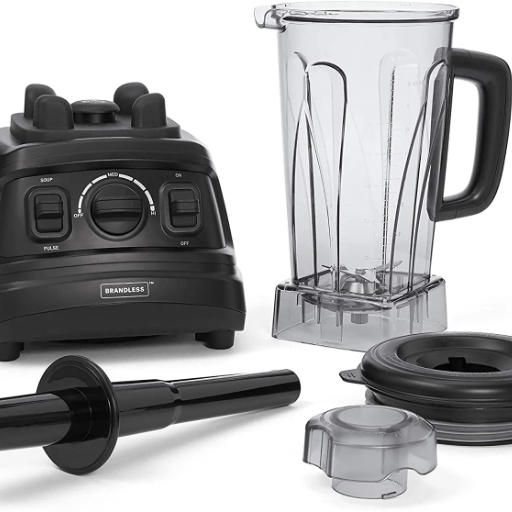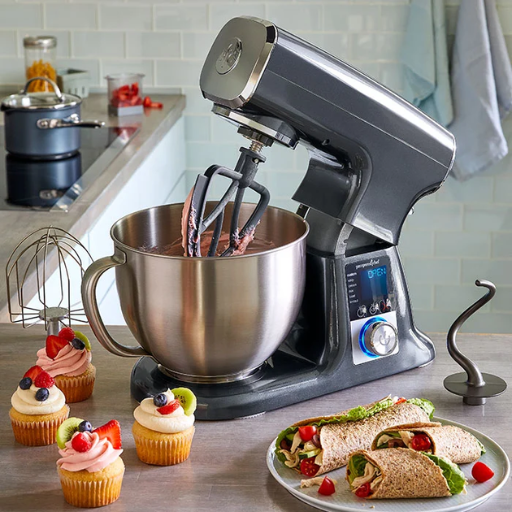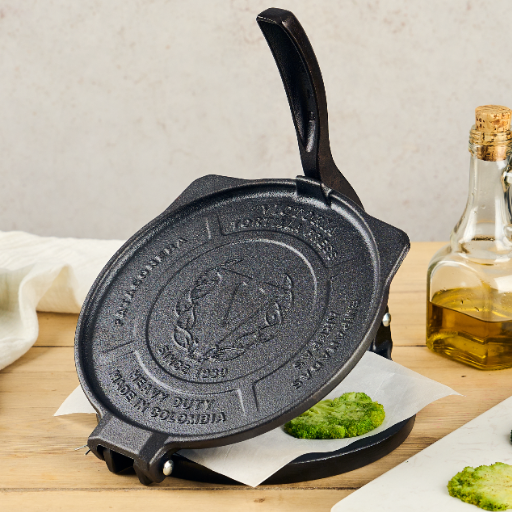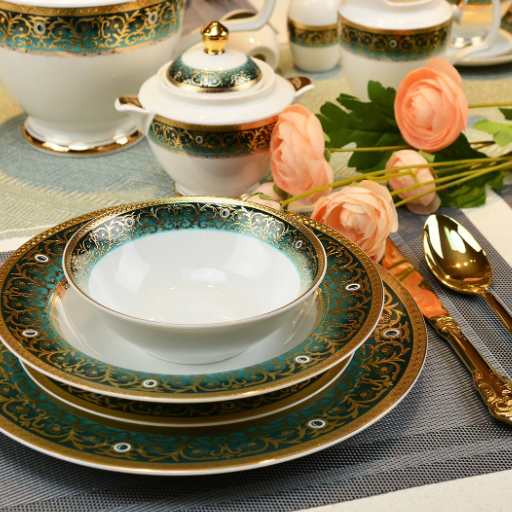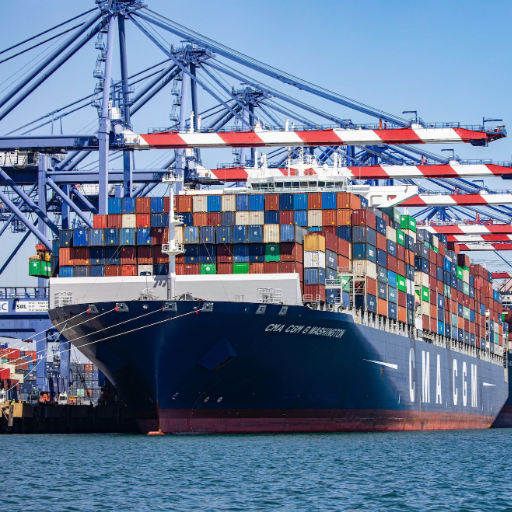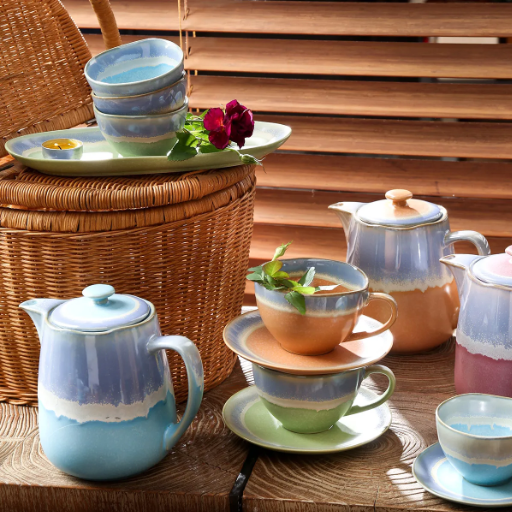A versatile double burner gas stove cooks a variety of dishes and are considered a must-have tool in kitchens and for outdoor adventures. If you are looking for a home double burner gas stove for a delicate balance between efficiency and portable cooker, your search ends here. In this article, we will take a look at the various options available in the market with each one of their features, advantages and ways they work towards solving your cooking needs. We cover everything from small space compact designs to high power models tailored for large scale cooking.
What is a Double Burner Stove?
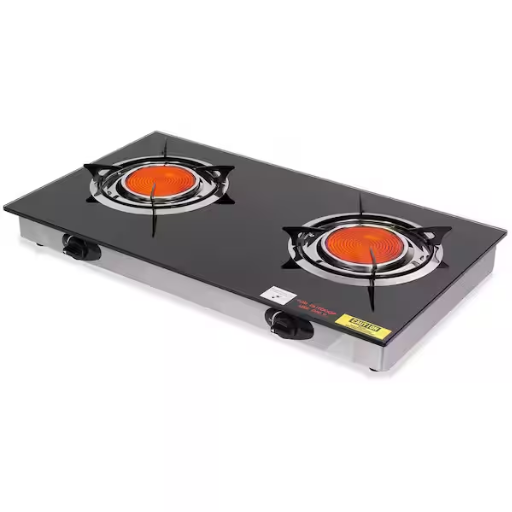
A cooking stovetop has two heating elements, allowing you to use them at the same time. Like most cooked fueled appliances, they are powered by gas or propane which ensures constant heat control and efficiency when turned on. Due to their portability, they are perfect for camping trips or as home kitchen buddies. Double burner gas stoves are compact and multifunctional in nature.
Understanding the Number of Burners in a Gas Stove
The efficiency, usability, and overall usefulness of a cooking appliance are tied to the number of burners on it. Most household gas stoves come with 2 to 4 burners which cater to basic to intermediate culinary requirements. Advanced models, like those designed for large households or professional kitchens, typically come with 5 to 6 burners which provide suitable accommodation for more advanced and higher volume cooking.
Every burner has its own size and power requirements. Some are best suited for a particular type of cooking. For example, high-BTU burners are best for stir-frying or boiling water and are always located on larger stoves. On the other hand, smaller ‘simmer’ burners are best for very delicate cooking. Today’s multi-burner stoves come with features such as dual ring burners which provide more control over the temperature. The overall technical design of a burner also impacts selection, as some may need space-saving options, specific cooking habits, or performance convenience.
How Does a Double Burner Work?
The operation of a double burner stove involves the use of two concentric circles of flames which are controlled independently and thus, provide a wide variety cooking temperature levels. The usage of an outer fire ring provides maximum heat reward which is beneficial for boiling water on a high fire, stir-frying, and searing. The inner ring provides much lower temperatures which aids in simmering and delicate culinary activities. The simultaneous use of both rings improves energy efficiency alongside providing versatile cooking options. With this, the energy output of the burner can be best matched to the size of the cookware and cooking being undertaken. With safety in mind, advanced designs flame modulator technologies and electronic ignitions which improves efficiency can also be used. Some other models also boost power temporarily, enhancing heat output on both rings. As a result, these burners are exceptionally suited to both high demand and need for precision.
Benefits of Using a Double Burner Stove
- Enhanced Cooking Efficiency
Burner double stoves enable users to cook several dishes at the same time thus reducing the overall time taken to prepare everything. Statistics show families that used double burners saved time convincing stovetop-singles. Households equipped with double-burner stoves triumphed over single-burner stove users in a staggering 30% enhanced meal prep efficiency.
- Energy Savings
With advanced adjustable flame modulation settings, double burner stoves are specifically designed to provide and regulate heat accordingly and optimize energy consumption. Efficient double burners proved to be a much needed eco-friendly choice as studies indicate, they provide a staggering 20-25% reduction on fuel consumption.
- Precise Heat Control
The addition of power features allows the user to customize the heating levels for different methods of cooking. For instance, one burner can be set to low simmer enabling delicate sauces to remain warm while the other operates at maximum heat. This freedom improves the quality of the cooking process.
- Versatility and Adaptability
Modern double burner stoves are designed to give a power boost which benefits the user when cooking complicated or high demand recipes. These stoves still manage to retain their versatility and are able to handle small saucepans as well as large woks.
- Space Optimization
Advanced double burner stoves are designed for compact kitchens with the ability to enhance cooking capacity. Compared to standalone stoves, the reduced footprint works great for apartments, RVs, and even outdoor activities.
Double burner stoves are excellent mobility catering appliances with energy efficient operations, time savings, and precision cooking capabilities needed by professional chefs and home cooks.
What are the Features of a 2-burner gas Cooktop?
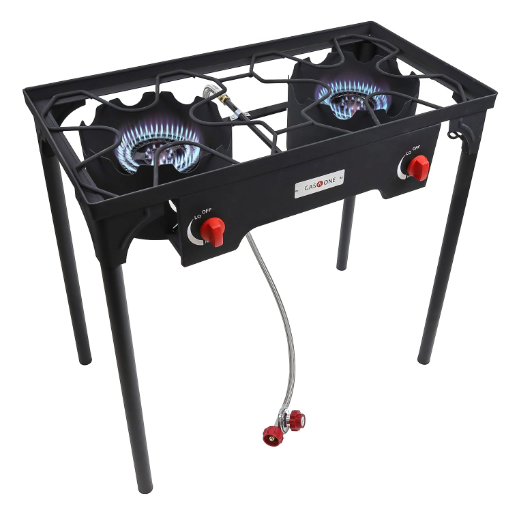
- Compact Design
The 2 burner gas cooktop is conveniently portable for use in RVs and most outdoor locations. It also has a space-efficient design which makes it perfect for kitchens with limited countertop space.
- Efficient Heating
Cooking with these high-performance burners powerful cooktops save energy, cut down cooking time, and reduce energy used by utilizing fast and efficient evenly distributing heat.
- Durable Construction
These cooktops retain their modern look while being tough and heat resistant due to their stainless steel and tempered glass construction.
- Easy Maintenance
The cooktop will always look its best when the removable grates and flat surfaces are maintained because they are effortless to clean.
- Safety Features
For enhanced safety, many models integrate flame failure protection, which ensures gas flow will be halting automatically if the flame is accidentally extinguished.
These important aspects, such as the Dual Burner gas cooktops feature and practicality adaptability for various burning types of cooking
Material Options: Stainless Steel vs Cast Iron
Stainless Steel: This material is very common due to its corrosion resistance, which makes it useful for long-term stainless steel surfaces that frequently undergo wet work environmental conditions. The heat-resistant, porous side of stainless alumite casts enables full cleaning while reducing oil particles or any dust gunk. Furthermore, its lightweight aids in simple gas cooktop installation and movement during use. Most modern stainless steel ones are shiny and match to the type of atmosphere found in s cooking area.
Cast Iron: The most common and unique feature of cast iron is that it provides the best level of heat retention as well as distribution which leads to evenly cooked food, even when using lower temperatures. Because of its extreme durability, cast iron is very tough and can withstand a lot of damage and wear and tear over many years. On the other hand, cast iron is rust prone meaning that it needs more maintenance and care. Many of the cooktops made of cast iron have an enamel layer which makes them really good against rust and at the same time offers a unique classic beauty.
The user’s needs drive the decision of between stainless steel and cast iron. In case a user is focused on the traditional designs elements and cleaning, stainless steel surfaces is more preferable. On the contrary, impressive durability, efficiency in heavy workloads and hot cooking temperature burners, cast iron does far better rounded
Ignition Types: Manual vs Electric
A user must ignite the burner with something like a lighter or matchstick for manual ignition. This option might be better in places with no electricity since it does not depend on power directly. However, being unable to conveniently ignite the burner might make this option less favorable for modern users.
The control knob either activates a spark generator or glow bar which ignites the burner. With the push of a button or the twist of a knob, flames will instantaneously be produced. Because of how effective and easy this option is, it is highly dependable. Other features like flame failure devices which cut out gas supply if the flame goes out unexpectedly are common too. The only downside of this option is that it requires electricity to function. In places where power is unreliable, that feature becomes a weakness.
Every user has different needs and preferences for the two types of ignition. Some users may enjoy using appliances without worrying about power systems such as manual options, and some users may prefer ease of use like electric ignitions with their safety focuses aimed towards daily routine cooking.
How to Choose the Right Portable Stove for Outdoor Cooking?

1. Cooktop – Fuel Choose one of propane, butane, or multi-fuel stoves in accordance with their existence and fit. For example, Propane is better during cold weather. Butane, however, vaporizes much more easily and hence is safe to carry around.
2. Mobility: Check the stove’s weight and its bulkiness. Smaller portable versions allow for easier transportation while larger stoves provide for group cooking.
3. User Friendliness: Look out for manual (or electric) ignition systems and heaters with adjustable levels for cooking for precision and control.
4. Cooking Power: Check the stove’s BTU rating. Greater BTU ratings mean the stove is able to cook food faster, though it might be less efficient with fuel.
5. Durability and Stability: Choose design and material options that will ensure the stove will endure outdoor conditions within the use period and will remain stationary during operation.
6. Budget: Select a stove that balances a set of features with your defined safety and performance priorities while staying within budget limits.
Every element is indispensable in addressing your individual and environmental factors related to cooking with a stove.
Best Double Burner Options for Camping
- Camp Chef Pro 60X Deluxe
The Camp Chef Pro 60X is famous for its superb and dependable performance. It has two burners with a combined powerful output of 60,000 BTUs, making it easier to cook during inclement weather. It also supports portability since the stainless steel body is not only rugged but also includes detachable legs. Furthermore, the large cooking surface permits multi stacking of pots or pans. Besides, this model also has a three sided wind screen for maintained heat supply in windy climates.
- Coleman Triton+ Propane Stove
Pricing and quality doesn’t get better than the Coleman Triton+. Its 22,000 total BTUs paired with the ability to simmer and high-heat cook offer versatility. With the PerfectFlow™ pressure control system, fuel consistency is maintained while the WindBlock™ panels not only shield the flames but also adjusts to shield larger cookware. Due to its lightweight and compact nature, this model is a perfect fit for car campers as well as group trips.
- Eureka! Ignite Plus Stove
Carrying 2 burners set at 10,000 BTU each, precise temperature control, and ease of use, the Eureka! Ignite Plus is equally primed for family dinners, travel, as well as for the user with its ample cooking space suitable for bigger pots and pans. Constructed from stainless steel, the drip tray won’t retain dirt and paired with push-button ignitions, matches are obsolete. As the name suggests, Zebra makes packing a breeze with slim designs.
Comparing Propane vs Natural Gas
|
Key Point |
Propane |
Natural Gas |
|---|---|---|
|
Energy Efficiency |
Higher BTU per cubic foot |
Lower BTU per cubic foot |
|
Cost |
Typically more expensive per unit |
Generally cheaper per unit |
|
Availability |
Stored in portable tanks |
Delivered via pipelines |
|
Environmental Impact |
More carbon emissions than natural gas |
Cleaner-burning fossil fuel |
|
Storage |
Requires on-site tanks |
No personal storage required |
|
Portability |
Highly portable |
Limited portability |
|
Installation Cost |
Generally lower |
Higher due to pipeline infrastructure |
|
Maintenance |
Minimal maintenance required |
Maintenance of pipelines needed |
|
Energy Consistency |
Consistent performance in all conditions |
May decrease in very cold weather |
|
Popular Applications |
Remote and off-grid areas |
Urban and suburban settings |
What Safety Features Should a Double Burner Stove Have?

- Flame Failure Device (FFD): FFD safeguards against possible gas leaks since it cuts off the gas supply instantaneously if the flame goes off.
- Auto-Ignition: Prevents the possibility of burns or gas buildup by igniting the burner automatically when activated.
- Overheat Protection: Safeguards Against Potential Damage – Ensures stove damage or fire cannot occur by automatically shutting off the stove when overheating happens.
- Non-Slip Base: Helps keep accidents to a minimum during stove use.
- Heat-Resistant Controls: Ensures users will not incur burns while adjusting gas levels on the burner.
- Integrated Child Lock System: This feature adds extra security to homes where children are present, as it prevents random changes to the settings.
Carefully considering these features ensures safety during use, and peace of mind for the user in the long term.
Understanding Fuel Regulations
Compliance with safety legislation; makes sure to protect the environment and also, the operation of the appliances and systems that use combustible materials. These laws usually prescribe the allowable types of fuel, their quality requirements, and the emissions associated with their use. For example, in some places, low-sulfur fuel is required to help out with emitting sulfur dioxide which contributes to acid rain and breathing problems. There are also rules regarding the packaging and transportation of fuel to help reduce potential risks such as leaking or exploding.
Focus areas of international regulations now incentivize biofuels or compressed natural gas (CNG), place emphasis on clean energy, and reduce greenhouse gas emissions with the addition of hybrid and electric systems where appropriate. Regulatory authorities, such as the Environmental Protection Agency (EPA) in the United States or the European Union with its RED directive, actively implement these policies by setting stringent thresholds for compliance and auditing. For regulatory and legal-operational reasons, these shifting standards are equally crucial for both parties – manufacturers and consumers.
Safety Tips for Using a Gas Cooker
- Install and Maintain Proper Ventilation Systems
Safety note for the kitchen: Make sure there is sufficient space to allow the escape of any gases produced during heating and cooking, such as carbon monoxide (CO). Associated risks of CO poisoning can be mitigated with adequate kitchen ventilation as stated by the U.S. Consumer Product Safety Commission (CPSC). To optimize CO circulation, a range hood vented outside can be installed.
- Regularly Inspect Gas Lines and Connections
Regular examinations of gas appliances, hoses, and their fittings are necessary to eliminate the possibility of leaking. Any undetected small leaks can definitely pose a great danger of fire or an explosion. Such sources of leaks, bubbles without a sound, are easily detectable through the application of soapy water. For long term safety, certified professionals should be consulted to evaluate the gas cooker annually.
- Use the Correct Flame Setting
Do not turn the flame setting higher than the needed level as this wastes energy without improving cooking efficiency. A medium flame is optimal for most pots and pans as it enhances the rate of heat transfer and reduces gas consumption by 20%. Regardless of the situation, the flame color should never be yellow or orange as that indicates improper combustion which should be checked professionally.
- Keep Flammable Items Away from the Stove
Keep a minimum clearance of 3 feet (1 meter) between the gas cooker and napkins, curtains, paper products and other flammable materials. This decreases the chances of starting fires while cooking.
By following these detailed safety tips, users can save a lot of property and personal safety risks as well as streamline the operational efficiency of their gas cookers.
Can I Use a 2-Burner Propane Gas Stove Indoors?
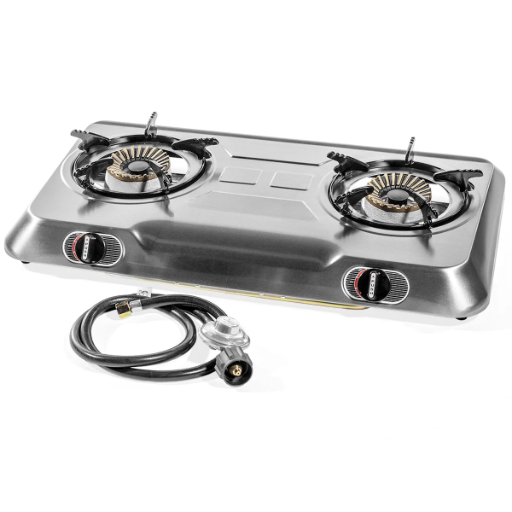
Propane gas cookers can be used 2 burners at a time and it is ok to use them indoors as long as safety measures are put in place. As with any type of gas burning stove, the area must be ventilated to allow the harmful gases such as carbon monoxide to escape. Like with any other device, the stove must be used as per its guide and a carbon monoxide detector should be placed in the room. Carbon monoxide and Propane gas connections should also be inspected on a regular basis and the stove must not be left unattended while in use. Following instructions will go a long way in ensuring there are minimal risks that come with the use of propane stoves indoor.
Ventilation and Safety Precautions
Clearing the vents and the surface where the propane fuel burns is one way to maintain indoor propane stoves. Such maintenance needs to be done regularly, as it clears any blockage which may limit the flow of propane, resulting in incomplete burning and inefficient functioning for the stove. Thermostats, pipes, and safety seals also need to be regularly checked for wear which may cause toxic gas leakage- a hazard to health. Moreover, sticking to the schedule confirmed by the manufacturer of the appliance aids in maintaining its performance over time. Thermostats are usually easy to ignite and therefore need to be maintained in a clean surrounding with no flammable materials in order to reduce chances of accidental burning. Carrying out such measures, along with assisted ventilation, enhances the functionality and safety of indoor propane stoves.
Best Practices for Indoor Cooking with a 2-Burner Stove
When using a two-burner stove indoors, propelling safety precautions and propellant safety management, as well as the temperature control, air circulation management is crucial. Always reduce propane consumption by adjusting the burner flame to the size of the cookware utilized. Most modern appliances have burners with high precision valves, which reduce temperature control problems, as well as overcooking or not utilitzing energy properly.
Venting off the carbon monoxide exhaust is a must when using indoor propane stoves. Propane powered stoves produce Carbon monoxide; hence the need for a rangehood or exhaust system that gets rid of carbon monoxide efficiently. In addition to the measures above, adding a carbon monoxide detector in the area where the stove operates would be a good safety measure.
Reference Sources
-
Gas stoves emit unsafe levels of nitrogen dioxide – A Stanford study discussing the health risks of gas stoves, including benzene emissions.
-
The Health Risks of Gas Stoves Explained – This article highlights a study linking gas stove use to 12.7% of childhood asthma cases in the U.S.
-
Gas Stove Emissions and Direct Health Effects – PMC – Discusses NO2 emissions from gas cooking and their association with asthma and wheezing in children.
-
‘No safe amount of exposure’ to gas stove pollution – A Harvard study on the dangers of nitrogen dioxide exposure from gas stoves.
Frequently Asked Questions (FAQs)
Q: What are the benefits of using a 2-burner gas stove?
A: A 2-burner gas stove is ideal for small kitchens or outdoor camping, providing efficient cooking with limited space. It offers flexibility for various cooking tasks while being energy-efficient.
Q: Can I use a propane stove 2 burner for outdoor camping?
A: Yes, a propane stove 2 burner is perfect for outdoor camping, allowing you to cook meals conveniently while enjoying nature. Ensure you have the appropriate regulator and hose for safe operation.
Q: What is the typical BTU output for a 2-burner gas stove?
A: The BTU output for a 2-burner gas stove can vary, but most models range between 10,000 to 20,000 BTUs combined, providing enough power for cooking various dishes efficiently.
Q: Are there portable gas stove options suitable for RVs?
A: Yes, there are portable gas stoves designed specifically for RV use, including auto ignition camping burner LPG options that ensure convenience and safety during your travels.
Q: What features should I look for in a dual burner stove?
A: When choosing a dual burner stove, consider features such as built-in ignition, adjustable knobs for precise heat control, and a portable stainless steel design for durability and easy cleaning.
Q: How does a 4 burner gas stove compare to a 2-burner model?
A: A 4 burner gas stove offers more cooking space and flexibility, making it suitable for larger meals or when cooking for a group. However, a 2-burner model is more compact and easier to store, making it ideal for smaller kitchens or camping.
Q: What is the difference between induction cooktops and gas burners?
A: Induction cooktops use electromagnetic energy to heat pots and pans directly, while gas burners use an open flame. Induction cooktops are generally more energy-efficient and provide precise temperature control, but gas burners are preferred for their traditional cooking experience.
Q: Can I convert my single burner stove to a dual burner configuration?
A: Converting a single burner stove to a dual burner configuration typically requires significant modifications and is not generally recommended. It’s usually more efficient to purchase a dedicated stove 2 burner model for optimal performance.
Q: What type of camping burner LPG is best for a family RV trip?
A: For a family RV trip, a portable gas stove with multiple burners and a high BTU output is recommended. Look for models with safety features like a reliable regulator and auto ignition to ensure safe and hassle-free cooking.

